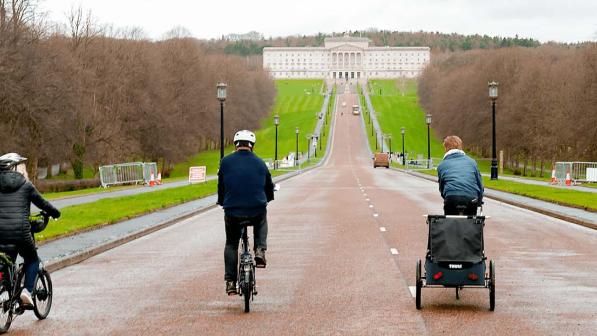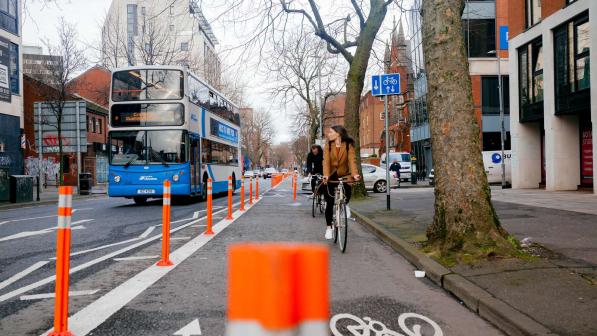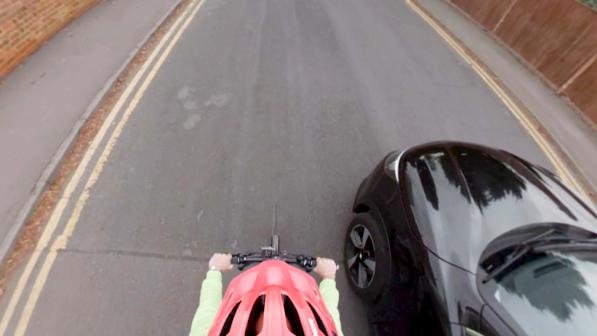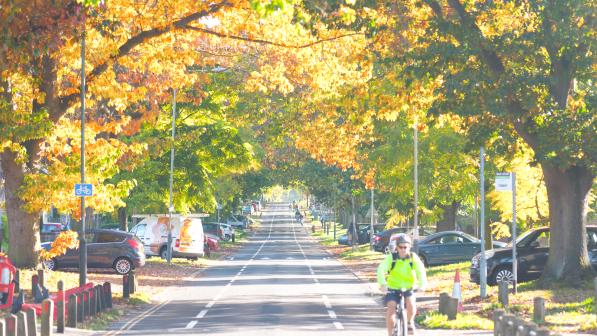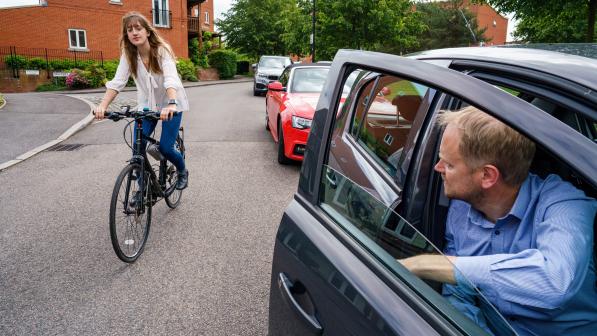Could a Road Safety Strategy get more people cycling in Northern Ireland?

The often-repeated statistic of the number of trips taken by bike in Northern Ireland makes for some very grim reading – it sits at just 1% and is not rising.
It’s obvious to many why this is concerning - indeed across the UK, Ireland, and in Europe, cities and nations are investing record levels of resources and funds to increase their levels of cycling, but not here.
The list of social issues that would be some way alleviated by increasing the number of people who choose to bike is as varied as it is long; climate change, air pollution, noise pollution, road space, parking space, road safety for all users, local economies, infrastructure costs, traffic congestion, public health (and therefore healthcare costs) and increased mobility for low-income households and young people, to name but a few.
So, why do people here not cycle?
The simplest answer is infrastructure and safety - both are intrinsically linked. Only 6% of cyclists reported feeling safe on the roads, the most common reasons for this were: heavy traffic (56%), bad driving (49%), poor road condition (40%) and vehicles travelling above the speed limit (37%).
Cycling UK were keen to engage comprehensively in the recent Department for Infrastructure (DfI) ‘Road Safety Strategy for Northern Ireland to 2030’, which we did through participation in 5 separate online public webinars and a response to the online questionnaire.
We believe there are 2 key aspects of road safety which will make it safer for cyclists and therefore increase cycling numbers:
- Cycling needs to be made much safer through better infrastructure, improved legislation and enforcement, and driver training.
- The perception of how safe cycling is in Northern Ireland needs to be addressed as, even if we get the first one right, many people won’t get on a bike unless they believe it is safe enough.
The overarching theme of our response is the idea of a ‘Hierarchy of Responsibility’ for road users. This is seen by many as a controversial term, and you don’t have to look too hard to see some of the vitriol directed towards cyclists in the media generally and online.
The fact is, if you are on the road, the safest place to be (by quite a large factor) is inside a car; perversely, if you are in a fatal collision (regardless of whether you are driving, walking or wheeling) the chances are over 99% it is with the driver of a motor vehicle.
Simply put, drivers of motor vehicles are both very safe inside their cars and they cause more danger to all other road users.
If we are serious about reducing the number of people who are killed or seriously injured, we need to recognise that the vast majority of these come from drivers, with 83% of fatalities on the roads coming from either careless driving, speeding, or driving under the influence of alcohol or drugs (NI Road Safety Statistical Report 2021). This is a staggering statistic and completely preventable through improved legislation and enforcement.
Speed Limits
In our consultation response we called for 20 mph to become the default speed limit for most streets in built-up areas, normalising the idea of driving at low speed where others are likely to be walking or cycling around.
In line with this, we are also calling for a default limit of 40 mph to be adopted for single-carriageway non-built-up roads.
Higher speed limits can be adopted where appropriate, but they would become the exception rather than the norm
The prevalence of rural roads is a feature particular to Northern Ireland and therefore was important to address in our response. A substantial number of cyclists killed or injured (32%) happens on rural roads.
Cycling UK is calling for the DfI and Local Authorities to establish ‘quiet lanes’ to help make rural areas safer and more attractive for cycling. These would be roads identified in rural settings which can facilitate active travel without having a major impact on main arterial routes. The roads would become shared spaces where car drivers are guests, achieved through reduced speed limits and signage. This will open up the space to cyclists, wheelers, walkers and horse riders without the need for big capital spending on the creation of new paths.
Graduated Driver Licencing
We fully support the decision to introduce Graduated Drive Licencing and feel that Northern Ireland will become an example for the rest of the UK to follow.
Further to this, Cycling UK proposes that the ‘education/training’ priority refers specifically to cycle training for children and adults. The three main benefits of high-quality cycle training are;
- People learn to cycle as safely as possible
- Parents and guardians feel more confident about allowing their young people to cycle
- Drivers will have had at least some personal experience of cycling which makes them more likely to consider cyclists safety when on the roads
Safe System Management
Cycling UK are calling for improvement and extension of the ‘Safe post-crash response’ pillar. We believe this pillar should include the legal process and involve:
- Gathering and publishing data on prosecutions, convictions and sentences for road traffic offences involving different user groups, both as the accused party and as the victim.
- Providing road crash victims with timely and thorough information about the conduct and progress of any criminal cases involving the offending party.
We are also calling for all UK governments to move towards a system of ‘presumed liability’. This applies when a pedestrian or cyclist is injured in a collision with a driver, the driver is presumed liable for compensation to the victim unless they can show that the victim is wholly at fault. This system is common in Europe and puts the onus of proof on the least vulnerable, giving drivers a stronger personal incentive to take due care of walkers or cyclists.
Perception of Cyclists’ Safety
If they are accepted, our proposals will make a tangible difference to the safety of cyclists (and pedestrians) on our roads. Therefore, one of the obligations of any changes made by the government is a comprehensive public awareness campaign and education of all road users. This will go a long way towards people feeling more confident and therefore more likely to use their bike for local journeys - if they know they are backed up by legislation, enforcement and a legal framework which is behind them if an incident does take place.
Alongside these changes we also need to see all government departments (a strong argument can be made that each one would see benefits from increased cycling) promoting cycling across Northern Ireland.
Upcoming Election
Cycling UK will be campaigning on these issues and more for the elections in May. We will be calling on all parties to pledge to increase the number of active travel Journeys through infrastructure, legislative and promotional commitments during the next Assembly.
Please get in touch to get involved.
